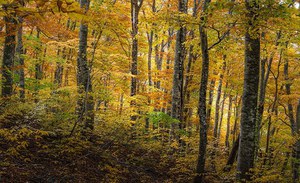International Day of Forests 2024
International Day of Forests is celebrated every 21 March and represents a fundamental moment to reflect on the importance of forests for our planet. Established by the United Nations General Assembly in 2012, the day aims to highlight the fundamental role that forests play not only in the supply of timber and non-timber products (berries, mushrooms, resins, etc.), but including in providing ecosystem services such as erosion control, biodiversity conservation, climate regulation and in providing livelihoods to hundreds of millions of people.
The theme of the 2024 Day is "Forests and Innovation" and places emphasis on the essential combination of forest conservation and technological progress.
- https://www.isprambiente.gov.it/en/news/international-day-of-forests-2024
- International Day of Forests 2024
- 2024-03-21T00:00:00+01:00
- 2024-03-21T23:59:59+01:00
- International Day of Forests is celebrated every 21 March and represents a fundamental moment to reflect on the importance of forests for our planet. Established by the United Nations General Assembly in 2012, the day aims to highlight the fundamental role that forests play not only in the supply of timber and non-timber products (berries, mushrooms, resins, etc.), but including in providing ecosystem services such as erosion control, biodiversity conservation, climate regulation and in providing livelihoods to hundreds of millions of people. The theme of the 2024 Day is "Forests and Innovation" and places emphasis on the essential combination of forest conservation and technological progress.
- When Mar 21, 2024 (Europe/Berlin / UTC100)
-
Add event to calendar
iCal
Forests currently cover approximately 4.1 billion hectares, an area equal to 31% of the planet's emerged land. From 1990 to today, the global forest area has decreased by 178 million hectares, recording a decline of 4.2%. They are not equally distributed around the world (FAO and UNEP, 2020), more than half (54.1%) of the world's forests are found in just five countries (Brazil, Canada, China, the Russian Federation and the United States of America). America).
Forests in Italy
Italy is home to a wide variety of forests, different from each other in terms of species composition, structure, function and ecological needs: from deciduous broad-leaved forests, including beech forests, turkey oak, oak, downy oak and oak forests, chestnut groves, ostriches and hornbeam forests, to evergreen broad-leaved forests such as holm oaks or the rarer cork oaks, from coniferous forests in the mountains with larch and pine, spruce and silver fir, to pine forests of Scots pine or black pine, up to the Mediterranean pine forests of stone pine , Aleppo pine and maritime pine.
From the Second World War to today, Italian forests have increased constantly, going from 5.6 to 11.1 million hectares. The growth, which occurred at the expense of agricultural surfaces and natural and semi-natural land, has accelerated in more recent years: from 1985 to 2015, forests increased by 28%, going from 8.7 to 11 .1 million hectares (National Forest and Carbon Inventory, 2020). The percentage of territory covered by forest has thus reached 37%, a value higher than that of "traditionally" forested countries such as Germany and Switzerland, both at 31%. However, some of these forest types are decreasing and require particular attention and protection. For example, riparian and hygrophilous woods have become very fragmented and rare, as have old-growth forests and precious lowland forest formations, which are increasingly compromised, destructured and reduced in size, threatened by fires, construction and infrastructure.
Last February 27, the European Parliament approved the law on nature restoration, so-called. Nature Restoration Law, marking an important step for the protection and restoration of European ecosystems.
The new law aims to contribute to the achievement of the EU's international commitments, in particular those set out in the UN Kunming-Montreal Global Biodiversity Framework.
The Law is innovative because for the first time it not only regulates the protection of the most important natural areas, but introduces rules to restore nature where it has already been degraded. The regulation establishes specific, legally binding objectives and obligations for nature restoration in certain ecosystems, from agricultural land and forests to marine, freshwater and urban ecosystems. Thirty percent of each ecosystem currently covered by the Habitats Directives will need to be subject to restoration measures by 2030, 60 percent by 2040 and 90 percent by 2050. EU countries will need to ensure that areas restored do not deteriorate significantly again. Furthermore, they will have to adopt, within two years of the approval of the law, their own national recovery plans which indicate in detail the tools (including financial ones) and the methods they intend to implement to achieve the objectives of the Regulation.

